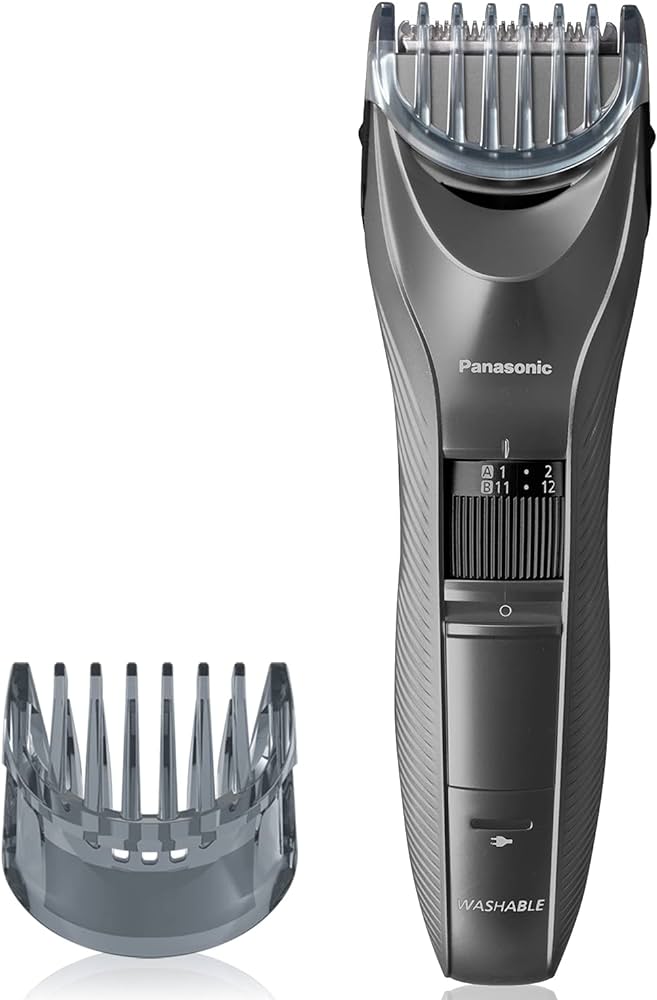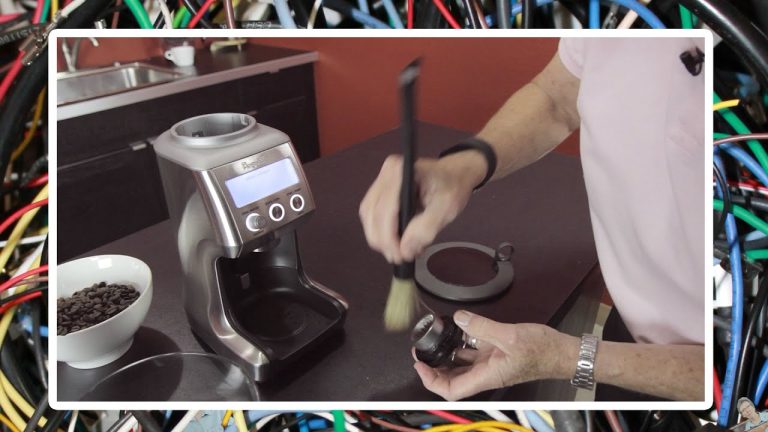How to Change Air Conditioner Filter
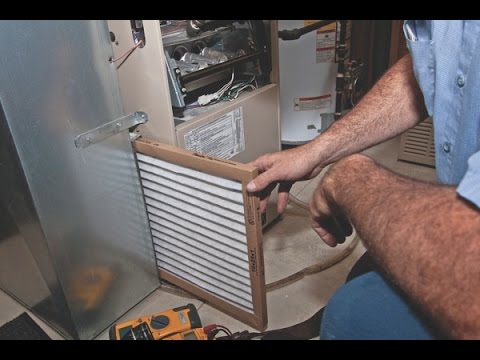
To change an air conditioner filter, first turn off the unit. Then, locate and remove the old filter.
Changing your air conditioner filter regularly ensures optimal performance and air quality. A clean filter improves airflow, reduces energy consumption, and extends the unit’s lifespan. Experts recommend checking the filter monthly and replacing it every 1-3 months, depending on usage and filter type.
Neglecting this simple maintenance task can lead to higher energy bills and potential damage to your air conditioner. Always refer to the manufacturer’s guidelines for specific instructions. Keeping your air conditioner filter clean is a quick and easy way to maintain a comfortable and efficient home environment. Prioritizing this task can save you money and hassle in the long run.
Introduction To Ac Maintenance
Changing the AC filter is very important. It keeps the air clean. Dirty filters can make you sick. They make the air dirty. Clean filters help you breathe better. They remove dust and pollen.
Regular filter changes save money. They help the AC work better. Efficient AC uses less power. This means lower electricity bills. It also means the AC lasts longer. Less wear and tear means fewer repairs.
Clean filters make the air healthier. They remove harmful particles. This includes dust, pollen, and pet dander. Better air quality means fewer allergies. It also means better sleep and health.
Changing filters helps the AC work well. It cools the home faster. Efficient cooling means less energy use. This is good for the environment. It also saves money on electric bills.

Credit: vittheating.com
Identifying Your Ac Filter Type
Identify your AC filter type to ensure proper replacement. Check the model and size details for an accurate match.
Disposable Vs. Reusable Filters
Disposable filters need replacing every month or two. Reusable filters can be washed and reused. Disposable filters are cheaper but need frequent changes. Reusable filters cost more but last longer. Check your AC unit’s manual for the right type.
Filter Sizes And Ratings
Filter sizes vary by AC model. Common sizes are 16×20, 20×25, and 20×30. Ratings indicate filter efficiency. A higher rating means better air quality. Look for the MERV rating on the filter. Check your AC manual for the correct size and rating.
When To Replace Your Ac Filter
The lifespan of an AC filter varies. Filters need changing every 1-3 months. Homes with pets or allergies need more frequent changes. Check the manufacturer’s guidelines for specific timelines. Keep a calendar reminder to track changes. This helps maintain air quality and system efficiency.
A clogged filter can cause poor airflow. Look for dust on surfaces more often. The AC might run longer than usual. Increased energy bills can be a sign. The air conditioner may make strange noises. Visible dirt on the filter is a clear indicator. Replace the filter immediately if you notice these signs.
Safety First: Preparing To Change The Filter
Gather all necessary tools and materials. You will need a new air filter, a screwdriver, and a flashlight.
A vacuum cleaner can be helpful for cleaning the filter area. Make sure you have a soft cloth or paper towels.
Turn off the AC unit before starting. This prevents any electrical accidents. Locate the power switch near the unit.
Flip the switch to the off position. Make sure the unit is completely off before proceeding.
Step-by-step Filter Replacement Process
First, turn off the air conditioner. This ensures safety. Locate the filter compartment. It’s usually behind a panel. Open the panel carefully. You might need a screwdriver. Slide out the old filter. Check its condition. If it’s dirty, it needs replacing. Dispose of the old filter properly.
Take the new filter out of its packaging. Make sure it matches the old one. Look for the arrows on the filter. These show the airflow direction. Insert the new filter with the arrows pointing in the right direction. Slide it into the compartment. Close the panel securely. Turn the air conditioner back on. Enjoy the clean air!
Ensuring Proper Fit And Installation
Ensure the air conditioner filter fits properly by checking dimensions and securing it snugly into place. A well-installed filter boosts efficiency and prolongs system life.
Checking Seals And Alignment
Check the seals around the filter area. They must be tight and without gaps. If there are gaps, air can escape. This reduces the efficiency of the air conditioner. Make sure the filter is in the correct position. It should be straight and aligned. Misalignment can cause air leaks. Air leaks make the air conditioner work harder.
Troubleshooting Common Issues
Sometimes the filter does not fit. Check if the filter is the right size. Some filters are too big or too small. If the filter is too big, it will not fit in the slot. If it is too small, it will move around. Make sure the filter is clean. A dirty filter can block the air flow. This can make the air conditioner less effective.
Post-installation Checklist
Turn on the air conditioner. Make sure it starts without any issues. Check if cool air is coming out. Feel the air near the vents. The air should be cold and steady. Listen for any strange noises. The unit should run quietly. Observe the thermostat reading. It should show the correct temperature. Inspect the area around the unit. Ensure there are no leaks or puddles. Verify that the airflow is strong. Weak airflow means something is wrong. Proper testing ensures your AC works well.
Take out the old filter carefully. Place it in a plastic bag. Seal the bag tightly to avoid dust. Dispose of it in the trash. Avoid touching the dirty filter. Wash your hands after handling it. Proper disposal keeps your home clean. Old filters can harm your health. Always use a new filter to keep the air clean. Changing filters regularly is good practice.
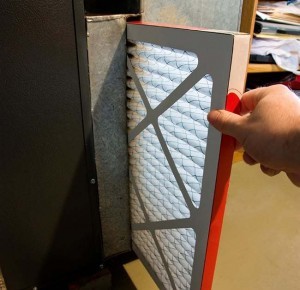
Credit: rainaldihomeservices.com
Maintenance Tips For Longevity
Clean your air conditioner filter every month. Dust and dirt can block the airflow. A clean filter helps your air conditioner work better. It also saves energy. Turn off the unit before cleaning. Remove the filter and wash it with water. Let it dry completely before putting it back. Regular cleaning can make your air conditioner last longer.
Schedule a professional inspection every year. Experts can spot problems early. They check for leaks and other issues. This keeps your air conditioner in top shape. A professional tune-up can prevent big repairs. It also ensures your unit runs efficiently. Regular check-ups can save you money in the long run.
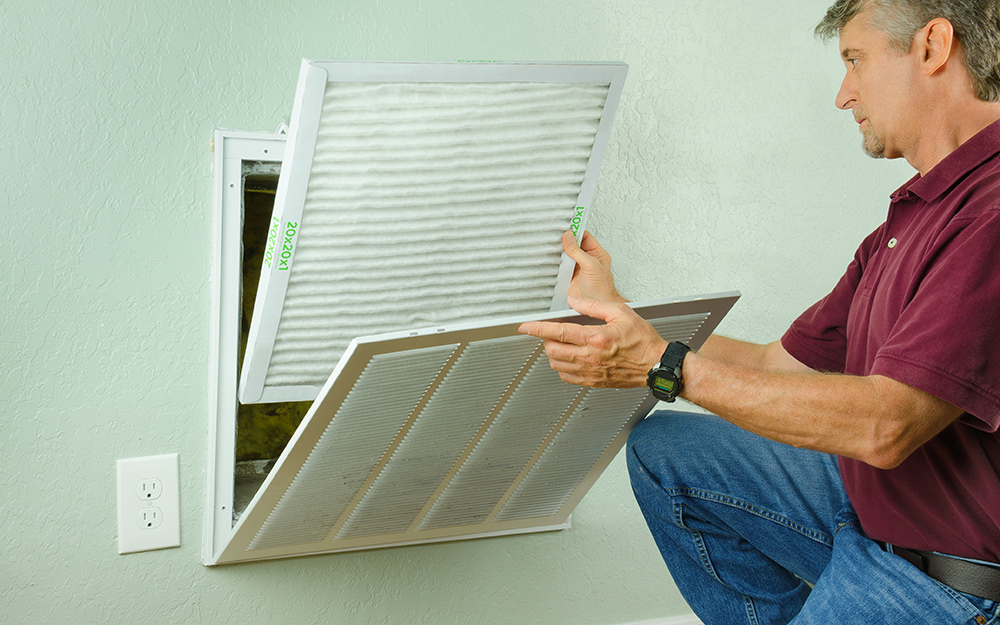
Credit: ecoactions.homedepot.com
Conclusion
Regularly changing your air conditioner filter enhances efficiency and air quality. It’s a simple task with significant benefits. Follow the steps outlined to ensure your system runs smoothly. Remember, a clean filter means better performance and energy savings. Keep your home comfortable by making this maintenance a routine practice.

